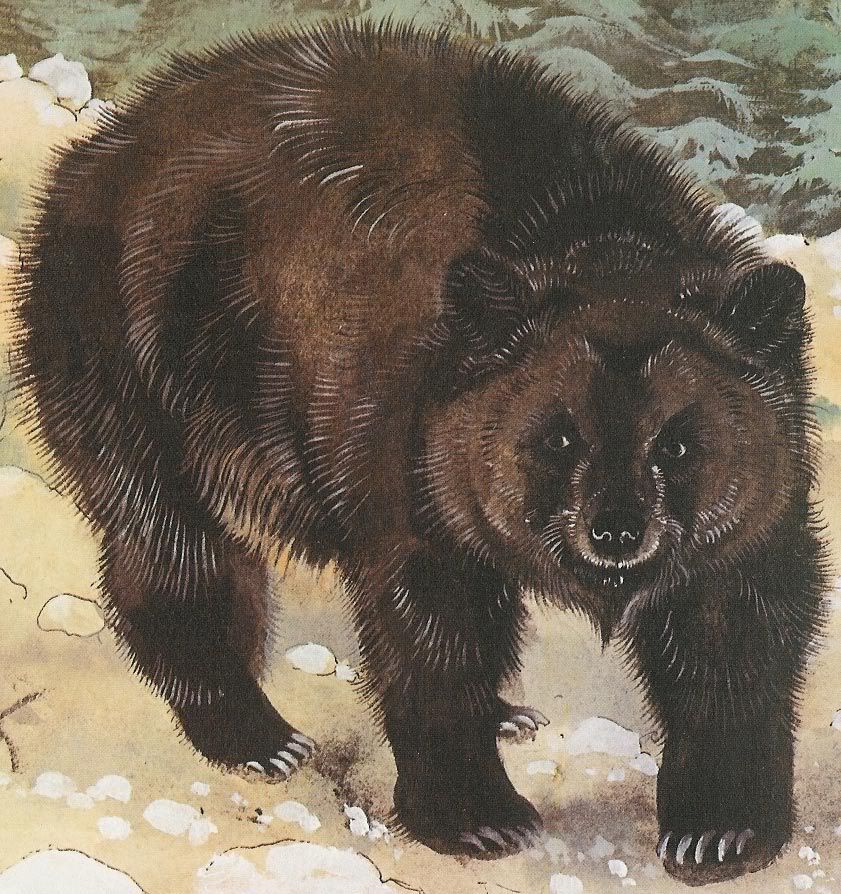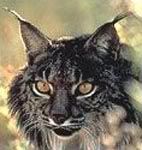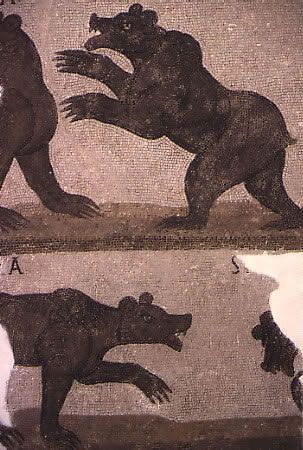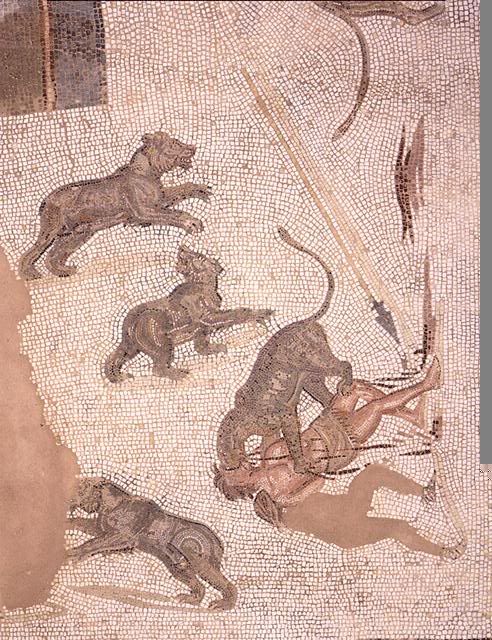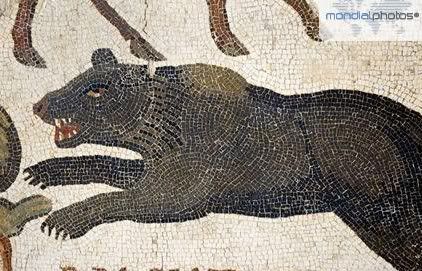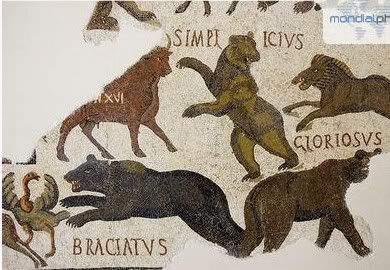Post by sebbe67 on Mar 4, 2005 12:32:08 GMT
Ursus arctos crowtheri
The Atlas Mountains of Morocco was the last stronghold of Africa's only native bear (Ursus arctos crowtheri). The Brown Atlas Bear - as it is generally known - seems to have steadily retreated in territory and dwindled in numbers over a period of more than 2000 years until its final extirpation in the nineteenth century, due to the proliferation of European guns in Morocco and Algeria.
The Atlas Bear's original territory was all of North Africa, and fossilized remains have been discovered in caverns throughout that region. The Greek historian Herodotus spoke of the `Libyan Bear', as did the ancient Roman writers, Virgil, Juvenal and Martial. The Roman magistrate, Domitius Ahenobarbus brought 100 `Numidian bears' to Italy in 61 Bc for the cruel sports of the arena.
However extensive the practice of hunting the Atlas Bear may have been in ancient times, this was probably not the main reason for its disappearance from the greater part of its range. The most obvious cause was simply habitat destruction. North Africa today would be totally unrecognizable to the pre-Christian Romans. At that time, most of :vlorth Africa was forest, but as more and more of it fell under Roman rule, their land was ruthlessly exploited to feed the great consumer economy of the Empire. Its timber supplied the navies of Rome with building materials for many centuries, and timber merchants and colonial landowners cleared vast areas for breeding sheep and goats. The characteristically sandy soil of North Africa, without its covering vegetation, could not withstand these changes and soon eroded. Dune formations began to appear. Once this process started, it could not be stopped - and even today the desert that began with the deforestation of North Africa continues to spread.
A small population of bears seems to have survived the bleak shifting of desert sands over the centuries by retreating to the mountainous and still partially forested regions of Morocco and Algeria. Once firearms became available to the native people in sufficient numbers. even this wary and withdrawn Atlas Bear population was at risk.
The eighteenth-century French naturalist, Poiret, was brought the fresh skin of an Atlas Bear by a Bedouin while in Mazoale, and reported that the beast at that time was not uncommon in the Atlas Mountains. As late as 1830, the Emperor of Morocco is known to have had an Atlas Bear captured alive and sent as a gift to the Marseilles zoological gardens.
It was not until the Englishman, Crowther, brought the bear to public attention by his investigations in 1840 that the scientific community really absorbed the fact of its existence. Edward Blythe of the London Zoological Society wrote to his associates in England of his interview with Crowther in Africa in 1841: `Upon questioning Mr Crowther respecting the bear of Mount Atlas, which has been suspected to be the syriacus, he knew it well, and it proves to be a very different animal. An adult female was inferior ill size to the American Black Bear, but more robustly formed, the face much shorter and broader, though the muzzle was pointed, and both its toes and claws were remarkably short (for a bear), the latter being also particularly stout. Hair black, or rather of a brownish black, and shaggy, about 10 to 13cm (4-5in.) long - but on the underparts, of an orange rufous colour - the muzzle black. This individual was killed, at the foot of the Petuan mountains, about 25 miles from that of the Atlas. It is considered a rare species in that part, and feeds on roots, acorns and fruits. Does not climb with facility; and is stated to be very different from any other bear.'
As late as 1867 another Frenchman, by the name of Bourguignat, received reports that there were numerous bears near Edough, and others, in the recent past, in Moroccan and Algerian mountain regions. `The Animal was said to be small, thickset, and brown, with a white spot on the throat, and to be very fond of honey and fruits.
It is likely that the Atlas Bear lived on a few decades after Crowther's investigations, but there are no confirmed reports of specimens taken since then. Certainly it did not survive the century.
(complete text from "The Doomsday Book of Animals" by David Day p 168-170)
The Atlas Mountains of Morocco was the last stronghold of Africa's only native bear (Ursus arctos crowtheri). The Brown Atlas Bear - as it is generally known - seems to have steadily retreated in territory and dwindled in numbers over a period of more than 2000 years until its final extirpation in the nineteenth century, due to the proliferation of European guns in Morocco and Algeria.
The Atlas Bear's original territory was all of North Africa, and fossilized remains have been discovered in caverns throughout that region. The Greek historian Herodotus spoke of the `Libyan Bear', as did the ancient Roman writers, Virgil, Juvenal and Martial. The Roman magistrate, Domitius Ahenobarbus brought 100 `Numidian bears' to Italy in 61 Bc for the cruel sports of the arena.
However extensive the practice of hunting the Atlas Bear may have been in ancient times, this was probably not the main reason for its disappearance from the greater part of its range. The most obvious cause was simply habitat destruction. North Africa today would be totally unrecognizable to the pre-Christian Romans. At that time, most of :vlorth Africa was forest, but as more and more of it fell under Roman rule, their land was ruthlessly exploited to feed the great consumer economy of the Empire. Its timber supplied the navies of Rome with building materials for many centuries, and timber merchants and colonial landowners cleared vast areas for breeding sheep and goats. The characteristically sandy soil of North Africa, without its covering vegetation, could not withstand these changes and soon eroded. Dune formations began to appear. Once this process started, it could not be stopped - and even today the desert that began with the deforestation of North Africa continues to spread.
A small population of bears seems to have survived the bleak shifting of desert sands over the centuries by retreating to the mountainous and still partially forested regions of Morocco and Algeria. Once firearms became available to the native people in sufficient numbers. even this wary and withdrawn Atlas Bear population was at risk.
The eighteenth-century French naturalist, Poiret, was brought the fresh skin of an Atlas Bear by a Bedouin while in Mazoale, and reported that the beast at that time was not uncommon in the Atlas Mountains. As late as 1830, the Emperor of Morocco is known to have had an Atlas Bear captured alive and sent as a gift to the Marseilles zoological gardens.
It was not until the Englishman, Crowther, brought the bear to public attention by his investigations in 1840 that the scientific community really absorbed the fact of its existence. Edward Blythe of the London Zoological Society wrote to his associates in England of his interview with Crowther in Africa in 1841: `Upon questioning Mr Crowther respecting the bear of Mount Atlas, which has been suspected to be the syriacus, he knew it well, and it proves to be a very different animal. An adult female was inferior ill size to the American Black Bear, but more robustly formed, the face much shorter and broader, though the muzzle was pointed, and both its toes and claws were remarkably short (for a bear), the latter being also particularly stout. Hair black, or rather of a brownish black, and shaggy, about 10 to 13cm (4-5in.) long - but on the underparts, of an orange rufous colour - the muzzle black. This individual was killed, at the foot of the Petuan mountains, about 25 miles from that of the Atlas. It is considered a rare species in that part, and feeds on roots, acorns and fruits. Does not climb with facility; and is stated to be very different from any other bear.'
As late as 1867 another Frenchman, by the name of Bourguignat, received reports that there were numerous bears near Edough, and others, in the recent past, in Moroccan and Algerian mountain regions. `The Animal was said to be small, thickset, and brown, with a white spot on the throat, and to be very fond of honey and fruits.
It is likely that the Atlas Bear lived on a few decades after Crowther's investigations, but there are no confirmed reports of specimens taken since then. Certainly it did not survive the century.
(complete text from "The Doomsday Book of Animals" by David Day p 168-170)



